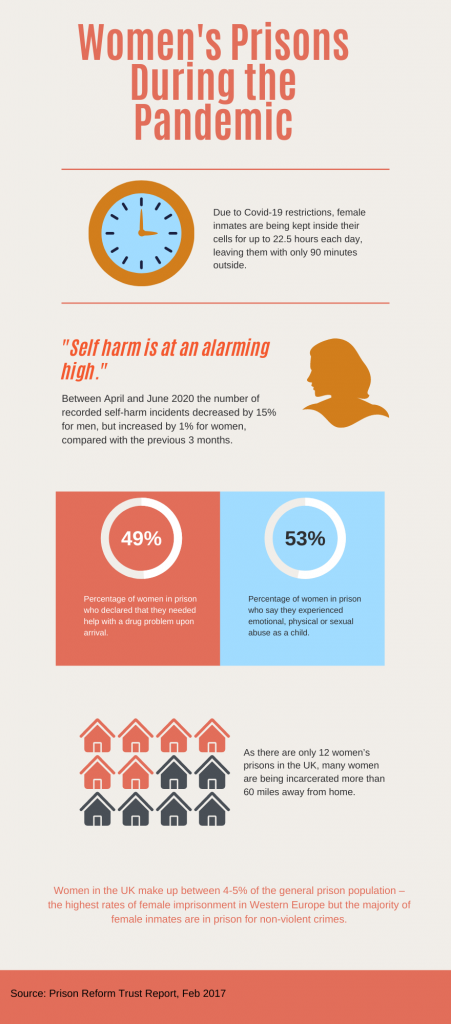“Women are forced to prioritise between showering or queuing up to use the communal phone.”
This is the reality of women’s prisons during the pandemic.
Overcrowded conditions and chronic understaffing make the task of maintaining social distancing within prisons near impossible, and female inmates are being hit the hardest.
In order to reduce the number of people coming into contact with each other, prisoners are no longer able to receive visitors and are kept in their cells for up to 22.5 hours every day, leaving them with only 90 minutes of time outside.
“With only 90 minutes outside of their cell, women are forced to prioritise between showering or queuing up to use the communal phone,” Kate Fraser, co-manager of the Greater Manchester Women’s Support Alliance, said.
While prisons have tried to introduce video calls as a solution to these measures, there simply aren’t enough staff to facilitate this and the technology can be slow.
The necessary measures used to curb the spread of coronavirus come at a cost as the support networks provided by families, agencies and charity workers are essential for the inmates’ mental health.
“Self-harm is at an alarming high,” said Ms Fraser.
Between April and June 2020 the number of recorded self-harm incidents decreased by 15% for men, but increased by 1% for women, compared with the previous 3 months.
Further shocking statistics show that female inmates are five times more likely to have mental health issues compared to the general population, and for every 10 female inmates, 7 are survivors of domestic abuse.
Moreover, 2 in 5 women leave prison without settled accommodation, often ending up on the streets upon release. In 2018, 441 female inmates which arrived into custody in Styal HMP had no fixed abode, compared to 286 in 2015 – a 54% increase over four years.

As there are only 12 women’s prisons in the UK, many women are being incarcerated more than 60 miles away from home, making it impossible for their relatives and friends to visit them regularly and uprooting them from their communities.
According to Ms Fraser, however, it doesn’t have to be like this.
One solution would be to reduce the prison population via an early release scheme; if an inmate is deemed low risk they should be eligible for Release on Temporary Licence (ROTL).
Women in the UK make up between 4-5% of the general prison population – the highest rates of female imprisonment in Western Europe but the majority of female inmates are in prison for non-violent crimes.
Women are sentenced disproportionately for certain crimes, for example non-payment of council tax, not having a TV licence and their child’s non-attendance at school.
“We are substituting one health crisis with another and we still haven’t seen the long term effects of it, as these women coming back into the community will impact their children, families and society.
“It’s a ball that just doesn’t stop rolling.”
Main photo: PrisonImage Creative Commons Attribution 3.0 Unported license.



